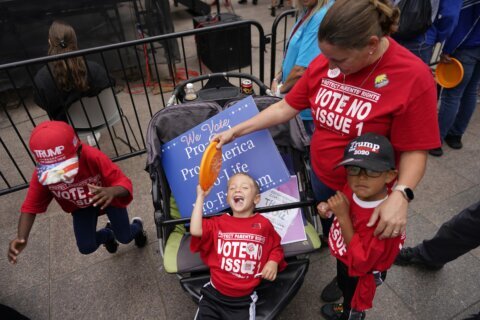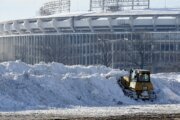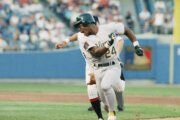Parents can prevent unsafe sleep deaths.
When you put your baby down for a nap, you never expect a tragedy to occur — but it can. Sometimes the cause is unknown, as with sudden infant death syndrome, but in other cases, the cause is clear. “SIDS deaths are deaths where we have no explanation for why this previously healthy baby died,” says Dr. Elizabeth Murray, a spokesperson for the American Academy of Pediatrics. “Unsafe sleep death is completely preventable.” As a parent, you have power to help keep your sleeping baby safe. Here’s what you need to know.
‘Boring’ is best for cribs and bassinets.
Bumpers, blankets, stuffed animals and toys — however cute — do not belong in cribs or bassinets, says Murray, a pediatrician with University of Rochester–Golisano Children’s Hospital. “I like to say boring is best,” she says. Babies should sleep alone in a crib that meets safety standards, says Marian Willinger, special assistant for SIDS for the National Institute of Child Health and Human Development. Besides lowering the risk of SIDS, Willinger says, “following safe sleep also reduces the risk of a baby dying from suffocating, entrapment and injury from falling out of the bed.”
Infants should sleep on their backs.
Back sleep is safest for newborns and infants, research shows. “A big misconception I hear is when parents are concerned that if babies sleep on their back and throw up in their sleep, they will choke,” Murray says. “That is not true.” The body is designed to prevent that, she explains. A baby’s windpipe, or trachea, is separate from his or her food tube, or esophagus. In a back-lying position, formula or spit-up in a baby’s mouth will go back into the esophagus. “It will not affect their airway at all,” she says.
You can keep babies both warm and safe.
Infants don’t need loose covers for comfort. Instead, Murray recommends the HALO SleepSack or other types of approved sleeping blankets. These are almost like tiny sleeping bags with arm openings, and babies can safely snuggle inside. “What’s so important is that it’s designed in a way that babies can’t accidentally cover their face,” she says. Adult-type bedding is a major sleep-environment hazard for babies less than 4 months old, she says: “Blankets, pillows, comforters and soft bedding put them at the greatest risk.” Firm, flat mattresses are safest for babies.
Cribs need narrow slats and stable sides.
Cribs made more than 10 years ago should not be used, according to the Consumer Product Safety Commission. Broken or modified cribs are also dangerous. “Infants can strangle to death if their bodies pass through gaps between loose components or broken slats while their heads remained entrapped,” the CPSC website says. Drop-side rail cribs do not meet federal safety standards, the American Academy of Pediatrics tells parents.
Babies sleep safer alone.
Share your bedroom with newborns, but not your bed. Co-sleeping is hazardous, according to the Baby Safe Sleep Coalition. “Your baby should never sleep with a parent or a sibling,” the website says. “They could roll over on the baby in their sleep, killing the baby. Many moms think they won’t roll over on their baby, but it does happen.” Instead, place the crib or bassinet near your bed within arm’s reach.
Breast-feeding is best while you’re alert.
Having the bassinet nearby also allows parents to hear babies’ cues and breast-feed more easily, Murray says. “Breast-feeding can be very well-maintained by still having a safe sleep environment,” she says. “We want to make sure when moms are breast-feeding that they’re awake and aware of what’s going on. So this concept of lying down and almost sleeping while you’re breast-feeding is just not safe.” After breast-feeding, she advises, “Go ahead and put your baby down in their own sleep environment.”
Nursery room placement matters.
When decorating the nursery, some parents hang pictures on the wall to make the room feel warm and comforting. That’s fine, Murray says, as long as the baby’s crib is not positioned against that wall. Once the child becomes a toddler, he or she could reach up and pull a picture down on himself or herself. “Either have the crib in the middle of the room, or just don’t put anything on the wall,” she says. “The same thing, of course, goes for curtains and drawstrings. You don’t want anything like that near the child.”
Tummy time takes supervision.
It’s good for babies to spend time on their tummies — as long as they’re supervised. “There’s nothing wrong if you’re observing the baby to put a blanket on the floor, when they’re awake, and put them on it for tummy time,” Willinger says. But don’t let a newborn fall asleep on his or her belly, she warns. “It’s not until they’re much older that [babies] can flip from their stomach to their back,” Willinger says. “So once they get in that [tummy] position, it’s hard to get out.”
Use (and give) baby gifts wisely.
While that handmade blanket from your baby shower can’t go in the crib, it needn’t go to waste. “What we’ve suggested is if you do get some really pretty quilts as a gift, that you hang them on the wall,” Willinger says. Mobiles should be out of reach, the CPSC says, and removed from the crib once your baby is 5 months old or beginning to push up on hands and knees. For safe baby gifts, Murray says, her go-to present is a sleep sack.
Car seats are not sleep devices.
“Sleep devices are sleep devices; car seats are car seats; cribs are cribs,” Murray says. “So when left unattended, a baby should be in an approved sleep device.” If your baby falls asleep in the car seat while you’re there, that’s fine, she says. But it’s unsafe to leave babies sleeping alone in car seats or infant seats, for example. Smaller babies can “kind of scooch themselves down,” she says, and compromise their airways.
Day care providers must be on board.
If your infant is in day care, it’s essential that providers follow safe-sleep practices. “As a parent, it’s important that you advocate and say, ‘These are our beliefs with regards to safe sleep — you need to follow the same things here,'” Murray says. Set ground rules and make expectations clear, she advises: “Make sure your day care provider does know that a baby needs to be on her back, alone, with nothing else in her crib or bassinet, while she sleeps.”
More from U.S. News
10 Things No One Tells You About Breast-feeding
10 Concerns Parents Have About Their Kids’ Health
What Your Doctors Wish You Knew
How to Promote Safe Sleep for Your Infant originally appeared on usnews.com






